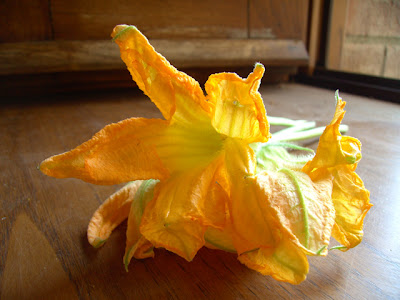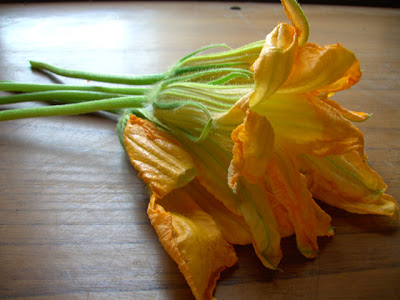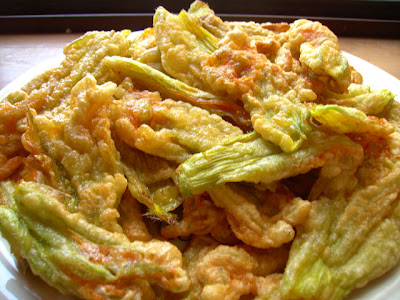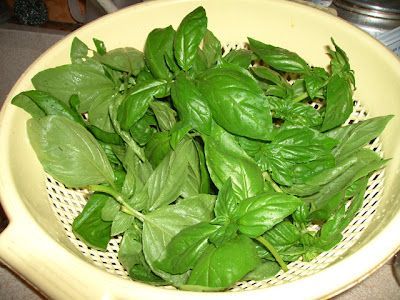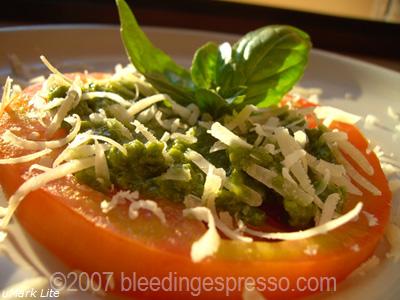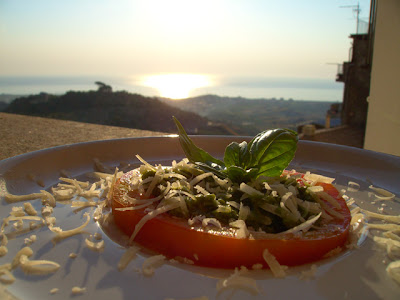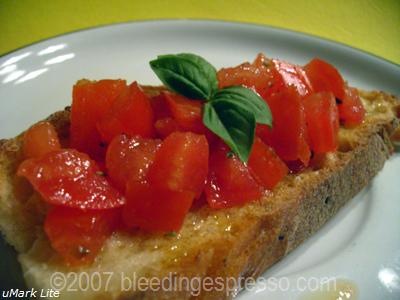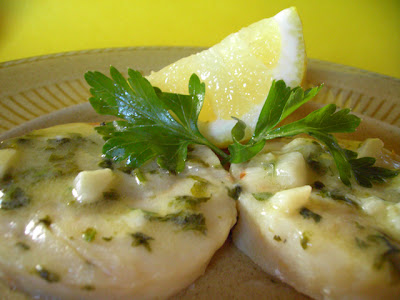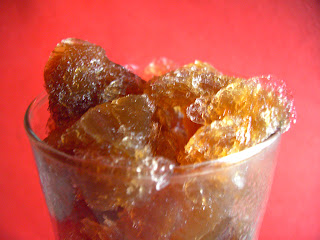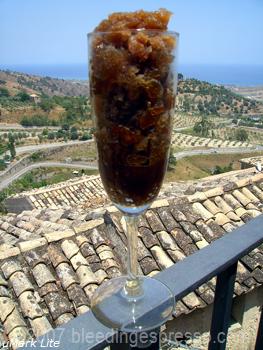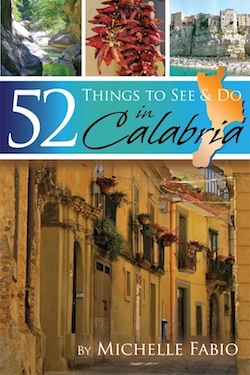Archive for the ‘what’s cooking wednesday’ Category
Zucchini Flowers Stuffed with Ricotta, Spinach, and Prosciutto Crudo
*This recipe has been featured in the Fairbanks Daily News-Miner.*
Today’s What’s Cooking Wednesday has us playing with some flowers.
Those of the lovely zucchini, or courgettes to some of you:
Don’t they just look good enough to eat?
Fiori di zucchine come in two varieties, male and female, and they’re both edible. You can tell the females by the fact that they are attached to the zucchini whereas the males have stems like regular flowers. The ones pictured above, then, are males.
Plus, of course, the females have pistils and the males have stamens (you remember biology class, right?). They say you can leave these in when you prepare the flowers to be eaten, but I always remove them with a quick twist. Ouch!
There are a lot of very basic, very delicious recipes for fried zucchini flowers out there–just whip up a tempura batter with flour, egg, milk, and salt (slightly more exact measurements below), and fry ’em up.
And that’s what I did with about half of the flowers, the smaller ones.
With the rest, though, I wanted to try a little something more adventurous. So I spiced up my ricotta and spinach cannelloni filling with some prosciutto crudo. I loved the results, the way the saltiness of the prosciutto picked up the sweetness of the flowers and how the spinach brought it all back down with its earthy flavor.
All measurements are approximate, so feel free to play.
Zucchini Flowers Stuffed with Ricotta, Spinach, & Prosciutto Crudo
(Fiori di Zucchine Ripiene con Ricotta, Spinaci e Prosciutto Crudo) 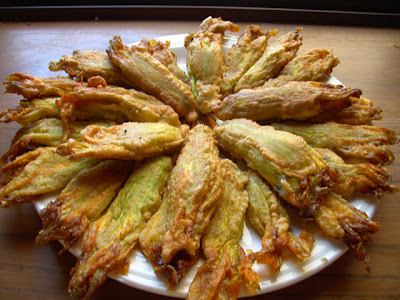
Approximately 25-30 large zucchini flowers
Filling:
1 egg yolk
One small container ricotta cheese (fresh if you can find it)
1/4 to 1/2 cup chopped spinach
prosciutto crudo, torn into bits or diced
grated parmigiano reggiano cheese
dash nutmeg
salt to taste
Batter:
(Note: I used this for all the flowers,
so this was enough for about 60 in all)
3 eggs
3/4 cup flour
1/4 cup milk
1/4 teaspoon salt (to taste)
Oil for frying
1. Prepare the batter and set aside; it shouldn’t be too thick for this recipe, although here they definitely make this batter quite thick and you end up with almost a fritter–tasty too, but not what we’re going for here.
One note: do remember that you’re dealing with flowers, so be gentle.
2. To prepare the zucchini flowers, remove the stamens and stems and then wash the flowers carefully and put them on paper towels to dry. Note that you can also leave the stems on for presentation purposes, but I usually take them off.
3. Prepare the filling by combining all the ingredients above and gently stuff the zucchini flowers up until the point where the petals start to open. I used a makeshift pastry bag (Ziploc with the corner cut off). You can twist the petals a bit to close in the stuffing. If you aren’t going to fry them right away, you can store the stuffed flowers this way in the fridge for a few hours, although I wouldn’t wait too long because the ricotta can get watery.
4. When you’re ready to fry, heat the vegetable oil in a medium to large pan.
5. One by one, dip the stuffed flowers in the batter (you’re going to have to use your hands here) and let excess batter drip off. Then drop the flower in oil and allow all sides to brown before you lift out and put on paper towels to drain. I’d recommend only frying two flowers at a time otherwise they become difficult to keep track of increasing burning possibilities.
Although they require a bit of prep work, these make tasty, impressive-looking appetizers, but you need to serve them warm. If you won’t be serving right away, use an oven to keep them heated until you’re ready to serve.
Buon appetito!
what’s cooking wednesday: pesto alla genovese
OK, show of hands. Who loves basilico?
Me me me!
Today’s What’s Cooking Wednesday recipe is Pesto alla Genovese, and although many of you probably know this basil and garlic-based sauce as a companion for pasta (often paired with linguine or spaghetti), I’m here to tell you that this should in no way limit your creativity.
I’m giving you a basic pesto recipe and one very easy serving suggestion (great for summer snacks!), but the possibilities are truly endless–Jamie Oliver told me so just the other day. He even mentioned chicken, and he’s a genius in the cucina.
But before we get to the recipe, a little information on pesto:
First of all, the word “pesto” means pounded or crushed; indeed the traditionally made pesto is made in a marble mortar with a wooden pestle. “Genovese” means that the recipe originated in the city of Genoa (Liguria region), as legend goes, as far back as the 16th century when a sauce called “battuto d’aglio,” loosely, crushed garlic, is referenced.
The traditional ingredients are basil, garlic, olive oil, salt, and Pecorino Sardo (a strong cheese from Sardinia), but most modern recipes also add pine nuts and/or other ingredients.
Note that Pesto alla Genovese isn’t the only pesto in town though; there’s also Pesto alla Siciliana from Sicily. Perhaps I’ll give you a recipe for that someday as well, but for now I’ll tell you that it includes far less basil and…tomatoes! Love those tomatoes!
Pesto alla Genovese
1 1/2 cups fresh basil leaves, washed (no stems)
2 medium-sized garlic cloves
4 tbsp pine nuts
1/4 tsp salt (can leave this out if your cheese is salty enough)
6 tablespoons olive oil
1/2 cup freshly grated Parmigiano Reggiano cheese
1/4 cup freshly grated Pecorino cheese (if you don’t have this, use all parmigiano)
If you’re using a mortar and pestle, I’ve been told (and I’ve read) that the trick is to chop the ingredients separately and then combine them bit by bit (except the cheese, which should be added last).
I, however, use a hand-held blender because that’s what I have. You may use a food processor. I put in the garlic, basil, pine nuts, salt, and olive oil and blend well, but not too well–you don’t need it to be completely amalgamated. Sometimes I add a little extra olive oil if it looks too dry.
Then I stir in the cheeses.
That’s it!
As shown above, I’ve sliced a big beefsteak tomato, spread on an espresso spoonful of pesto, then shaved some parmigiano on top–looks pretty, we’ve got the green, white, and red of the Italian flag covered, and it’s delicious to boot.
Would it gross you out to know I had this for breakfast?
Another idea would be to stuff cherry tomatoes with pesto. Yum! I just love tomatoes and pesto together–can you tell?
I’ve also had roasted red peppers stuffed with scallops and pesto, and they not only looked impressive, but also tasted fabulous.
So you see, pesto ain’t just for pasta anymore (not that it ever was), so get grinding!
Buon appetito!
—————
[tags]pesto, basil, basilico, pesto alla genovese, recipes, what’s cooking wednesday[/tags]
what’s cooking wednesday: bruschetta al pomodoro
I’m not going to lie to you–I’m not cooking a whole lot these days. Throughout the summer we eat a lot of fresh fruits and vegetables, doing very little to even try to flavor them because, quite honestly, they just don’t need it.
So for this week’s What’s Cooking Wednesday, I’m offering you something fast, easy, and delicious: Bruschetta al Pomodoro, or Bruschetta with Tomatoes–grilled bread topped with a summery mix of fresh tomatoes, basil, oregano, salt, and olive oil.
But before we get to the recipe, a little more on bruschetta:
First of all, we should start with something very basic: it’s pronounced “brew-SKET-tah” and not as many in America have heard, “brew-SHET-tah.” If you want to impress Italians, this is a good one to stick in your back pocket.
The origins of bruschetta are said to date back to the 15th century in central Italy (Rome and Tuscany fight over this) when olive oil makers brought bread to the mills and toasted it over a small fire used to keep warm during the November and December production. Then they poured freshly made olive oil over the bread to test it, perhaps rubbing in some garlic first, and early bruschetta was born.
Indeed, the term bruschetta actually refers to the bread and olive oil combination–the tomatoes were an (ingenious) afterthought, and it’s how most of us know this toasted bread combo today.
As you might imagine, the quality of olive oil greatly affects the quality of the bruschetta, so try to get the best you can for this recipe.
The bread though? This is perfect for using up that great loaf that went stale (and indeed, this is probably what made it so popular in Italy before it spread to the rest of the world).
Bruschetta al Pomodoro
(Bruschetta with Tomatoes)
*makes 6 pieces
6 thick slices Italian or French style bread
1/4 cup olive oil
2 large, ripe tomatoes (or more if smaller), diced
2 cloves garlic, peeled and cut in half
4 large basil leaves, chopped
sprinkling of oregano and salt
Prepare the tomato mixture first to give the flavors time to blend.
A note on preparing the tomatoes, especially if they are rather juicy, you might want to give them a squeeze before dicing to get rid of excess juice; otherwise the mixture gets a little runny and messy once you try to put it on the bread. Some also recommend cleaning out all the seeds, which you can do as well, but I don’t. And if you don’t like skins, parboil the tomatoes for a minute in boiling water just removed from the burner and then peel with a sharp knife.
In a small bowl, combine tomatoes, olive oil, basil, oregano, and salt to taste. (You can use either oregano or basil as well–both are not necessary.)
Grill or toast bread. I do mine with a grill pan on the stove, but you can use a broiler, the oven, a toaster, whatever works for you.
When the bread is toasted and still hot, rub well with the “raw” side of the garlic cloves.
Spoon the tomato mixture on top, and serve hot.
Other notes:
- I’ve seen some recipes that call for the garlic chopped up and in the mixture with tomatoes, which is another option, but for me, it’s too strong of a garlic flavor; I, obviously, do as described above.
- Feel free to play with this recipe adding whatever you like to the mixture–black olives, capers, cheese, other grilled vegetables. It’s very versatile and great for a summer (or anytime) party.
Buon appetito!
—————
[tags]bruschetta, bruschetta al pomodoro, bruschetta with tomatoes, tomatoes, appetizers, recipes, what’s cooking wednesday[/tags]
what’s cooking wednesday: cuoricini di merluzzo in bianco
My fellow Americans…Happy Fourth of July!

In grand tradition, we probably should be firing up the grill for hot dogs and hamburgers (yes, we have them both here, buns and everything!), but back home we also ate a lot of hardshell crabs to celebrate, so we’re going to keep with the seafood theme for this week’s What’s Cooking Wednesday.
Unfortunately, we don’t have good crabs here (they’re so tiny!) but we do have excellent cod.
This dish is called “Cuoricini di Merluzzo in Bianco,” which is literally “Small Hearts of Cod in White.” Sounds romantic doesn’t it?
First, let me explain a little about cod. The best description of the different types in Italy I’ve found is here, and it’s broken down like this:
merluzzo: fresh cod
baccalà: conserved, in pieces, under salt (many Italian-Americans have this for Christmas Eve but even more of you probably recognize this as a name from a certain gangster TV series that recently ended)
stocco: dried and sold whole
I believe we’d call “cuoricini di merluzzo“cod medallions–round pieces about the size of the palm of your hand.
Note here that we’re talking about “pieces of cod” as opposed to “codpieces.” Hah! Go ahead, click on it. I’ll be here when you get back.
We used frozen cod because someone had given me a bag, but you could also do this with fresh fish (haddock as well, in which case my mom would probably call it “Poor Man’s Lobster”).
This recipe is so easy and so delicious, there’s no reason you shouldn’t try it–unless you don’t like cod of course. It’s great and light for the summer with a simple salad on the side, or you can do it as part of a larger meal with this as an appetizer.
Cuoricini di Merluzzo in Bianco
2 tablespoons olive oil
2 cloves garlic, chopped
1/2 kg frozen cod medallions (about eight)
2 tablespoons fresh parsley, chopped
salt to taste
water, enough to cover cod in pan
juice of a lemon for serving
Defrost cod (submerge in cold water if you’re in a hurry).
Put olive oil in pan over medium heat, add garlic and allow to cook for a minute or two.
Add cod, salt, and parsley, and let cook on one side of the fish for a few minutes (you’ll see it start to brown a bit in spots), then flip.
Turn down heat to low, add enough water to come up to the fish but not cover completely, and let cook for 20-25 minutes. The sauce will be boiling, so just let it as such, giving the pan a shake every so often, until it thickens enough for you.
Serve hot with sauce from pan poured over the fish.
Garnish with a good squirt of fresh lemon juice and a sprig of fresh parsley.
Buon appetito!
—————
[tags]merluzzo, cod, cuoricini di merluzzo, cod medallions, fish, recipes, cooking, what’s cooking wednesday[/tags]
What’s Cooking Wednesday: Coffee Granita
To be perfectly honest, the only thing cooking around here these days is me—as in, I think I can identify with a roasted chicken just a bit more. The temps have been in the 100s (40+ degrees Celsius) for a couple days, so there hasn’t been much going on at the stove or, heaven help us, in the oven.
We’ve subsisted on simple salads, other quick pasta dishes, and some cold meats and cheeses and fresh bread.
Oh, and the granita (grah-NEE-tah).
What’s that you ask? If any of you are familiar with what I’ve heard called shaved ice, Italian water ice, Italian ice, or (for you Philly folks especially) Rita’s water ice, that’s basically it, or at least they’re all cugini.
For anyone unfamiliar, granita is basically a slushy, flavored ice (some are even more like sorbet), and it’s a staple in Italy in the summer.
I’ve seen it credited to Sicily and even Spain, but in the honor of good summer fun, let’s just agree that it’s darn good and move on, shall we?
Shelley has written about granita and also another related treat, grattachecca, in Rome and Sara can tell you how to make it watermelon-flavored (my favorite growing up), but, in keeping with the theme of this here blog thingee, today’s What’s Cooking Wednesday is…granita al caffè, or coffee granita.
I love it so much it just may be replacing my iced coffee as my morning brew these days when you just have to, in the words of my late grandmother’s favorite TV chef, kick it up a notch. You may be thinking, “Isn’t that kind of like ice cream for breakfast?”
And I’m thinking, “Isn’t it great to be an adult sometimes?”
Granita al Caffè
2 cups water
½ cup sugar
1 cup very strong espresso, cooled
Heat water and sugar over low heat until the sugar melts. Bring to a boil, and then remove from heat and allow to cool.
Mix in coffee, put everything in shallow container and into the freezer. I use muffin pans (the 6-muffin type) because then I can make individual servings.
When the mixture is mostly frozen, take it out and you’re ready to smash it up. If it won’t budge from the pan, give the bottom a dunk in hot water and flip it.
Now, you can use a food processor, but if it’s really hot like it is here, it’ll all melt before you know it and you’ll be back to square one. If you’re set on using the food processor, make sure everything is frozen solid, then cut the mixture into chunks and do it that way.
Me? This time I just mashed it up with a spoon. As you can see from the photo, I left the chunks larger than usual to compensate for the heat, and now I think I actually like it better this way. The food processor will get it smoother, of course, and more traditional granita-fied.
******************************
Update!
Since the weather cooled off a bit today (a real breeze!), I was able to do a more slushy thing. I didn’t bother with the food processor though–just used the edge of a big metal spoon.
The view, I’m sure, looks familiar by now, so look at that coffee granita!
******************************
Some notes:
- All measurements are in the “American” cups, so I’m not talking about just a tiny cup of espresso here.
- You can top this with whipped cream for a special treat, but around here people look at you funny if you have dairy products when it’s warm.
- There are many recipes for granita all over the place, including one specifically for coffee granita at fellow Italian expat Judy‘s place Over a Tuscan Stove. Feel free to play with the sugar and water mixture to your taste and be brave with flavors!
- Speaking of flavors, you can easily do a lemon granita from this basic recipe substituting the juice of two large lemons and the zest of one lemon in place of the coffee.
- A final note to anyone who would like to participate in What’s Cooking Wednesday–be sure to let Shannon over at Tales from the Fairy Blogmother know so she can include you in the weekly roundup!
Now raise your granita and let’s salute:
To the summer!

